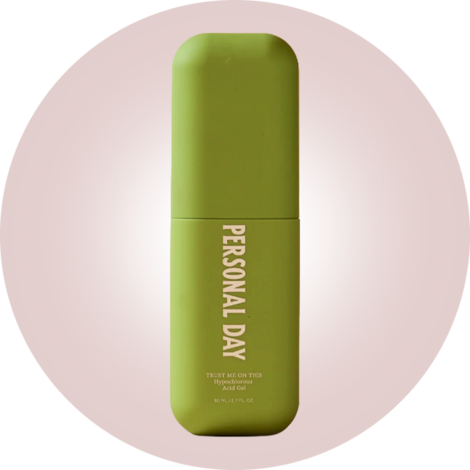We’re all used to the dressing-on-the-side lady and the gluten-free vegetarian who eats only locally sourced eggs. Many people avoid entire food groups, shunning anything processed, along with ingredients such as sugar, corn, salt, soy, or dairy.
I’m one of them. Gluten- and dairy-free, I also have the Seed Oil Scout app on my phone, telling me which restaurants use avocado oil—not that I check it. I let my host know about my dietary restrictions in advance (when they ask!). But my behavior occasionally makes me wonder: When does a preoccupation with healthy eating become a disorder?
“Orthorexia,” a relatively new term coined by Dr. Steven Bratman in 1996, describes a collision between obsessive-compulsive disorder and anorexia nervosa. Its sufferers take the impulses I have to extremes. He described it as an excessive focus on quality rather than quantity, leading to restrictive eating and ultimately, on occasion, malnutrition. While orthorexia is not formally recognized in the Diagnostic and Statistical Manual of Mental Disorders, the primary resource for diagnosis and treatment of mental disorders in the U.S. and Australia, it’s considered to be in the category of disordered eating. The public’s relatively new awareness of how food is sourced, processed, and packaged seems to be contributing to the condition’s rise.
Orthorexia is often accompanied by social isolation, and its symptoms can include avoiding meals, agonizing over choices, insisting on preparing meals oneself, and adhering rigidly to dietary rules. These behaviors can escalate over time.
For orthorexics, going off script can induce psychological distress. “Healthy eaters can function in a group, share a meal, and eat outside their range,” says Dr. Gia Marson, a psychologist in Malibu who specializes in eating disorders. She describes an inability to adapt, and a mental and behavioral rigidity around acceptable foods—often endowed with arbitrarily defined “purity”—so that “clean eating” becomes the center of one’s existence. “The point at which orthorexia becomes problematic is when it interferes [with daily life]—for instance, someone who can’t travel for work or attend a family meal,” says Marson.
My behavior occasionally makes me wonder: When does a preoccupation with healthy eating become a disorder?
Many of her patients are the children of those who are themselves excessively fixated on food—the soy-free-sugar-free-almond-milk-only house, the check-the-ingredients house, the no-processed-meats-ever house. “These kids grow up in a deprived setting, so if they go to a birthday party and have a piece of cake, they feel guilty,” she explains.
The problems are compounded by social media, as many teenagers are now following “healthy lifestyle” influencers, familiarizing themselves with “clean fats,” and taking extreme measures to avoid pesticides.
Marson says the psychological cornerstone of orthorexia is common to other eating disorders: the need to be in control. Risk factors include tendencies toward obsessive compulsion and perfectionism, and sometimes a fear of sickness. Whereas hypochondria is a worry about undiagnosed illness, the anxiety from orthorexia comes from the fear of developing poor health in the future.
It’s not always entangled with struggles over body image and weight, but it can bump into other eating disorders such as anorexia. “It’s a slippery slope,” says Dr. Elaine L. Rosen, an adolescent-medicine physician who specializes in eating disorders in children, adolescents, and young adults at U.C.L.A.. Orthorexia affects young men and women, and Rosen’s patients range in age from 7 to 26. An eight-year-old with an eating disorder? “I have several that age,” she says.
Balance, an eating-disorder treatment center in Manhattan, is seeing more and more patients with orthorexia. Its founder and C.E.O., Melainie Rogers, a certified eating-disorder registered dietitian, says, in orthorexics, “the body and brain are not getting the nourishment they need. We want to get back to a functional body weight.” This does not necessarily mean all patients are underweight: “functional” simply refers to not living in a state of despair.
For orthorexics, spontaneous meals can be challenging. During meal support therapy, Rogers and her colleagues sit with patients as they eat, helping them manage their anxiety and stress responses while using exposure therapy to gradually introduce foods back into the diet.
They are categorized by color. “Green” refers to things the patients are already eating—an apple, for instance. “Yellow” denotes a new product they might have previously avoided, such as yogurt made from low-fat cow’s milk instead of a nonfat, dairy-free version. The “red” zone includes “terrifying” foods or behaviors, such as grocery shopping. Eventually, Rogers wants them to eat a cookie without reading the ingredients.
If the treatment is successful, patients can enjoy parties, dinners at restaurants, and travel without experiencing anxiety and panic. They go from living in a world that’s black and white, as Rogers describes, to a world full of colors.
Ariel Leve is an award-winning journalist, columnist, author, television writer, and screenwriter. Her memoir, An Abbreviated Life, was published in 2016





